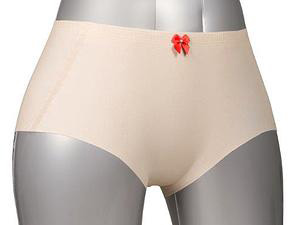First of all, they will heretofore be referred to as “underwear”, so as not to elicit chuckles out of our readers from Lambda Lambda Lambda. Tamar Giloh, in attempting to solve the problem of heavy menstrual flow suffered by women globally, sought to develop a method for quickly manufacturing biodegradable underwear. After the project’s inception in 2001, Giloh and her husband have come up with a unique method of fabric printing that has garnered the couple’s company, Tamicare, with over $10 million in investments.


In terms of comparisons with traditional underwear production, an added benefit is that this process requires no cutting and therefore produces no waste.
Using Tamicare’s machinery, it’s also possible to seamlessly create garments with meshes, multiple colours and multiple materials. Furthermore: “patterns, perforations, embossing and decorations may be created by additional printing onto the 3D structured base plate.”
Renowned industry consultant, Terry Wohlers is quoted as saying: “this is an unusual application and certainly a first in the world of 3D printing,” in response to Tamicare’s manufacturing process.

The printing process has potentially profound implications for the design of clothing, bandages and sportswear, among other things. Not only does fabric printing limit the amount of waste created in the manufacture of clothing, but, if perfected, the printing of fabric could lead to innovative design and automated production of clothing as well. Giloh tells Bloomberg that Tamicare is in talks with a large US company to sell Cosyflex in the United States and that their compression bandages will be sold by a British company in the near future.
Source: Bloomberg Businessweek


